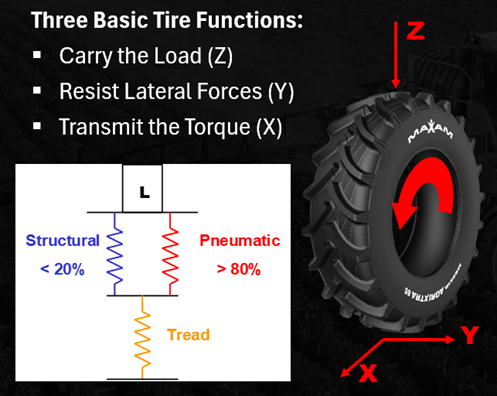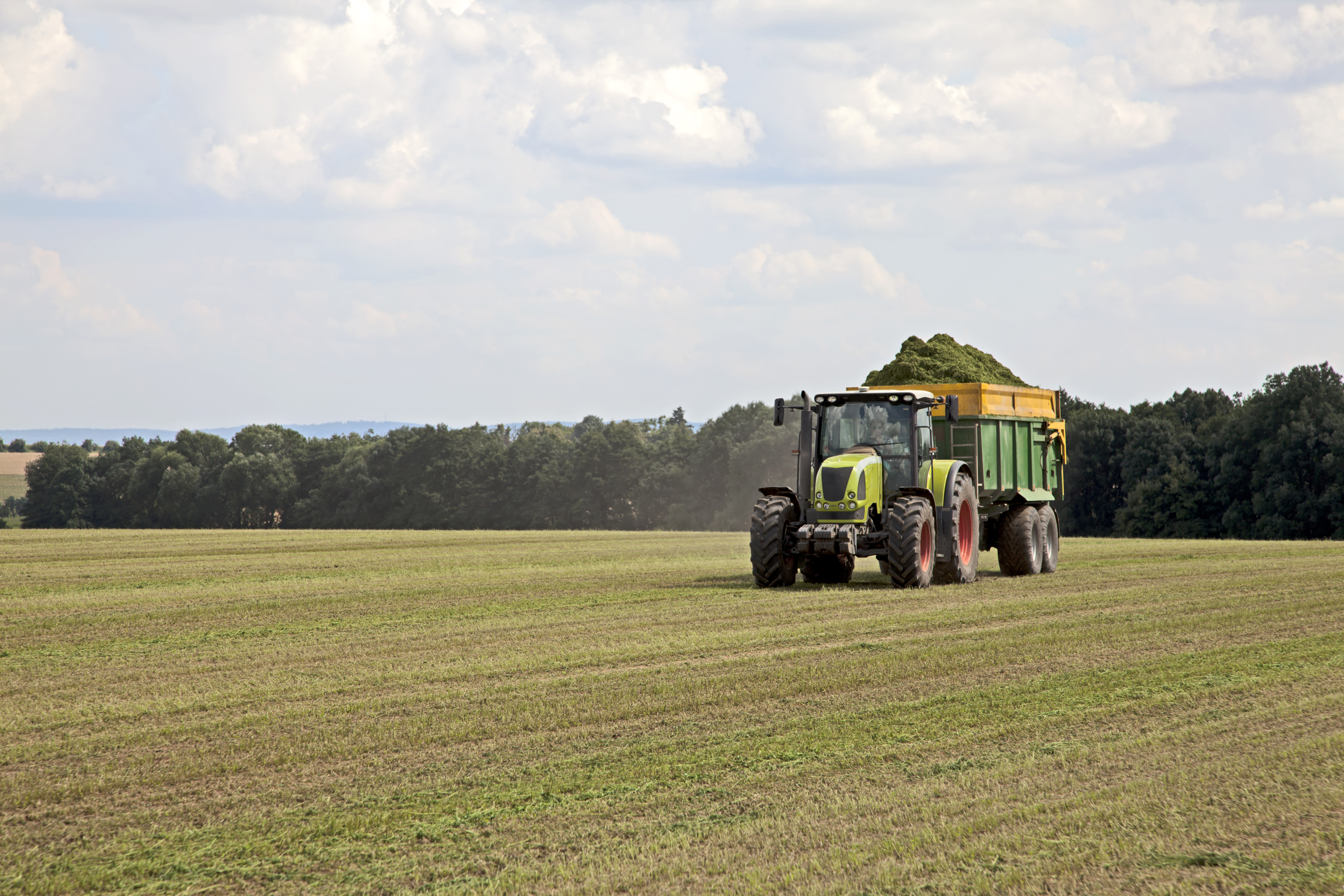Every farmer and grower knows that air pressure is critical, but few understand why requirements change based on the job. Running your tractor tires at the wrong inflation pressure can lead to excessive soil compaction, premature tire life loss, and poor fuel efficiency.
This guide breaks down the science behind air pressure for free-rolling, low-torque, and high-torque applications, empowering you to make informed decisions that protect your soil and your bottom line.
The Forces Acting on Ag Tires
To understand tire pressure, you must first understand the forces your tires face:
- X-Force: The drive that moves the tractor forward or backward.
- Y-Force: The lateral movement that stabilizes the tire side-to-side.
- Z-Force: The vertical force that supports the axle load.
In radial tires, the compressed air inside the chamber carries 80% of the Z-Force load. The optimal PSI is a careful balance between the load carried, the operating speed, and the desired tire footprint needed to minimize ground pressure.
Three Types of Ag Tire Applications
Not all field work is created equal. Your farm equipment subjects tires to different stresses, which dictates the ideal inflation pressure.
1. Free-Rolling Applications (Towed Implements)
This is when a tire is on a towed wheel position, like on a sprayer or some implements. The tire is subjected to the axle load and the pulling force of the tractor. The primary consideration is carrying the weight at a given speed, making it a candidate for lower air pressure to maximize flotation and achieve reduced soil compaction.
2. Low-Torque Applications (Powered Field Work)
This is your standard field work: tillage, planting, or disking. The tire is on a powered wheel position but is applying lower torque at slower speeds. Here, you can use less air pressure to allow the tire sidewall to flex, creating a larger footprint for better traction, less slippage, and minimal soil compaction.
3. High-Torque Applications (Transport & Roading)
When you need to move equipment between fields at higher speeds, the tires enter a high-torque application. The increased speed generates more heat and stress, requiring higher air pressure to maintain load capacity and ensure safety during roading.
Duals and Triples: When Tires Need More Air
A common misconception is that adding tires always reduces pressure. The opposite is often true due to load transfer on uneven ground.
- Dual Tires: The combined load capacity of four tires on an axle is reduced to 88% of their total single-tire capacity. This requires a slight air pressure increase to maintain stability.
- Triple Tires: With six tires on an axle, the capacity is reduced to 82%. This can require a +35% increase in inflation pressure to safely carry the same load as a single tire, ensuring even weight distribution and preventing an overinflated or underinflated condition on individual tires.
Using the Central Tire Inflation System (CTIS)
Manually adjusting pressure between field and road is time-consuming. The most efficient solution is a Central Tire Inflation System (CTIS). This system allows you to adjust tire air pressure on the go from the cab—lowering it for better traction and flotation in the field, and increasing it for safe, efficient transport. It’s the pinnacle of modern tire technology, ensuring you always operate at the perfect PSI.
MAXAM’s Recommendations for Perfect Air Pressure
To maximize crop yields and tire lifespan, follow these guidelines:
- Consult Inflation Tables: Always set your cold inflation pressure based on the heaviest expected axle load and highest operating speed for the task.
- Balance Your Ballast: Proper ballast is crucial to ensure your tires are working at their optimal pressure for the load, improving fuel savings and reducing rolling resistance.
- Right-Size Your Tires: Ensure your tire size and construction (Standard tire, IF tires, or VF tires) are matched to your primary applications. VF tires, for example, are engineered to carry the same load at 40% lower tire pressure, providing a larger footprint and improved traction.
- Prioritize Flotation for Soil Health: The right low pressure creates an optimal tire footprint, which is your first line of defense against soil compaction. Healthier soil means better yields for all your crops, from soybeans to corn.
By understanding the forces at play and leveraging modern tire technology, you can transform your tire inflation strategy from a guessing game into a precise tool for improving productivity and sustainability on your farm.










